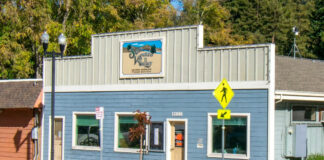Rainfall totals midway through the rainy season already exceed the total from recent years, and the spring showers show no sign of letting up.
After three consecutive drought years, the precipitation is promising.
“It’s close to what would be considered an average rainfall year. We’re closer to average than the last couple years,” said Jim Mueller, manager of the San Lorenzo Valley Water District
The past two years, the SLV Water District has been in Phase 2 of its drought management plan, which calls for its customers to reduce water use by 20 percent.
Mueller said the district will examine rainfall totals at the end of April to determine what the rain will mean for local residents.
“I can’t say for certain, but it’s looking probable that it won’t be a drought year and we won’t have to put any water restrictions in place,” Mueller said.
Boulder Creek had seen 43 inches of rain as of Tuesday, March 9. Last year, Boulder Creek had a total of 40.72 inches for the entire rainfall year, which runs July 1 to June 30.
Felton is at 39.99 inches to date, up from last year’s total of 36.49 inches.
“Generally speaking, if you work your way south (in the San Lorenzo Valley), the annual precipitation average decreases,” Mueller explained.
The SLV Water District relies on two water sources: surface water from local creeks and groundwater collected through underground wells.
When rainfall is healthy, the district uses surface water. But when there is less, the district banks on groundwater.
The Scotts Valley Water District draws most of its water from underground aquifers, which makes the city less vulnerable to rainfall fluctuations than the San Lorenzo Valley. However, rainfall is what recharges those aquifers.
“We don’t see an immediate impact on the aquifer from a rainy year,” district manager Charlie McNeish said. “But, cumulatively, it adds up. Clearly, it’s a good thing, contributing over the long term to our water supply.”
McNeish also noted that late-spring rainfall means that less water is used to irrigate local lawns, which in turn helps replenish the supply in the aquifers.
Scotts Valley has received 41.59 inches of rain so far this rain year. Last year, the city had a total rainfall of 40.51 inches.
Bonny Doon has seen 50.60 inches of rainfall to date. The total for the entire 2008-09 year was 54.22 inches.
Statewide, rain has replenished many reservoirs and covered the Sierra with snow, and water managers expect at least an average amount of runoff with the spring thaw. Still, the California Department of Water Resources is reluctant to declare an end to the state’s three-year drought, saying it will take more than one year of average rainfall to make up for recent dry seasons.












